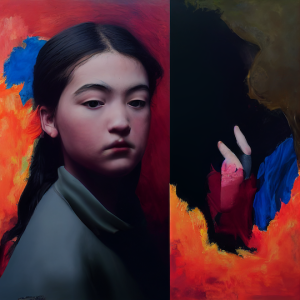Delving into the dynamic world of artistic interpretation and the importance of personal perspectives

Introduction
Art is a universal language that transcends time and space, allowing for profound connections between individuals and cultures. Despite its pervasive presence, the way we interpret and enjoy art remains a topic of ongoing debate.
Are our experiences with art objective, rooted in universal principles, or subjective, based on personal preferences and experiences?
Let us explore the concepts of objectivity and subjectivity in artistic expression and enjoyment, highlighting the importance of both perspectives in our overall appreciation of art.
Objective Aspects of Art
The objective view of art posits that certain artistic principles can be universally agreed upon, such as harmony, proportion, and balance.
These principles have roots in mathematics and science, and they can be seen across a multitude of art forms, from music and dance to painting and sculpture.
- Formal Elements
Artists and critics often discuss the formal elements of art, including line, shape, color, texture, and composition. These elements are crucial to creating visually engaging and harmonious works of art, and they are often used as criteria for evaluating the quality of an artwork.
- Historical Context and Cultural Significance
An objective understanding of art also takes into account the historical context and cultural significance of a piece.
By examining the time period, social circumstances, and cultural influences of an artwork, we can gain a deeper understanding of the intentions behind the piece and the impact it has had on society.

Subjective Aspects of Art
While objectivity can provide a valuable framework for analyzing art, the subjective nature of artistic expression and enjoyment must also be considered. Our personal preferences, experiences, and emotions play a critical role in shaping how we perceive and appreciate art.
- Personal Taste and Cultural Influences
Our cultural backgrounds and individual tastes influence our perceptions of art. Factors such as upbringing, exposure to various art forms, and personal interests shape our preferences and the way we engage with art.
This subjectivity leads to diverse interpretations and experiences, creating a rich tapestry of perspectives on any given artwork.
- Emotional Response
Art has the power to evoke a wide range of emotions, from joy and wonder to sadness and anger. Our emotional response to a work of art is highly subjective and deeply personal, making it a crucial aspect of our overall enjoyment and appreciation.
Finding the Balance
While the debate between objectivity and subjectivity in art may never be fully resolved, recognizing the importance of both perspectives can lead to a richer understanding and appreciation of art.
By acknowledging the objective principles that underpin the creation of art, we can better analyze and evaluate the quality of a work.
At the same time, embracing the subjective nature of artistic expression allows us to form deeper connections with art and discover our unique interpretations and experiences.
Conclusion
In the end, artistic expression and enjoyment are an intricate dance between objectivity and subjectivity.
By embracing both perspectives, we can deepen our understanding and appreciation of art while celebrating the diverse range of human experiences and emotions it captures.
As we continue to engage with art in its various forms, let us remember that both objective and subjective lenses are essential in our pursuit of meaningful connections and experiences with the world of art.













